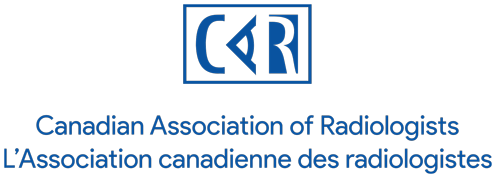What is Quality Improvement?
A quality improvement (QI) project is a process that seeks to improve patient care and outcomes through a systematic process of care against explicit criteria set out at the beginning of the project, subsequent measuring of the initial findings and review of any changes as a result of the quality initiative. Where indicated, changes are implemented at an individual, team, or service level and further monitoring is used to confirm improvement in healthcare delivery. (Adapted: New Principles of Best Practice in Clinical Audit, Edited by Robin Burgess. Published by Radcliffe Publishing, Oxford, 2nd edition, 2011. ISBN: 978-1-84619-221-0)
A QI project can be performed in small community clinics or large tertiary centres. It may involve a local small team or multiple levels of management or disciplines. The common aim is to ensure that best practice is being followed so that the highest quality of patient care is delivered.
Undertaking a QI project has the potential to improve patient care and provide the participants with the knowledge and skills to maintain a high quality of patient care throughout their careers.
As health professionals it is our fundamental duty to deliver the highest standards of patient care to patients. We need to know if we are achieving these standards. We need to know if we are maintaining these standards.
Abstract and Presentations
A Quality Improvement abstract and presentation describes the quality improvement project that has taken place in an institution.
Guidelines for Writing the QI Abstract
The CAR has adopted the Squire guidelines for reporting Quality Improvement in Medicine, recently updated as Squire 2.0. These provide a general overview of the information to consider when planning the project and writing the submission. Please click HERE for more information on squire 2.0.
Please remember to consider and include all stakeholders when planning a QI project. A multidisciplinary approach to QI is highly preferable for successful outcomes and is viewed favourably when the abstracts and presentation are judged. For example, a QI project to improve post-intervention rates of infection might include radiologists, radiology trainees, nurses, technologists, managers, and referring clinicians.
PLEASE READ THE FOLLOWING INSTRUCTIONS CAREFULLY.
Abstracts are limited to 300 words. This does not include authors, title, presenting authors level of training, institutional affiliation, Figure/image/table or section titles.
Quality Improvement Abstract Submission
The abstract submission must contain the following sections listed below (abstracts missing a section will not be reviewed):
- Author(s)
- Title of Submission
- Presenting Author's Level of Training (radiologist, fellow, resident, medical student, other medical professional)
- Institutional Affiliation
- Figure/Image/Table (mandatory)
- Background/Objective
- Methods
- Results and Discussion (the discussion is expected to be expanded in the final oral presentation)
- Conclusion
Guidance Notes for the Quality Improvement Abstract Submission
Authors
Please also state your name and position (medical student, technologist, radiologist, clerical etc.).
Institutional Affiliation.
Title of Submission
Keep in mind the following topics: Quality, safety, effectiveness, patient-centeredness, timeliness, cost, efficiency, equity of medical imaging and image-guided intervention services.
Presenting Author's Level of Training
Radiologist, fellow, resident, medical student, other medical professional
Figure/Image/Table
Your submission must also include one figure/image/table to support your work.
Background/Objective
Nature and significance of the local problem.
Purpose: Simple statement (1-2 sentences) of the purpose. This would typically begin with “The purpose of this initiative was...”.
Methods
Measures/data chosen for studying outcomes of the interventions including rationale for choosing them, their operational definitions, and their validity and reliability.
Description of the intervention(s) or process or collaboration in sufficient detail that others could reproduce it.
If applicable describe ‘the standard of practice’ you are examining and the target you are setting. The standard is an explicit statement which describes the standard of care that is expected. It may be derived from research, international or national guidelines, or consensus local practice. The target an explicit statement which says how many times the standard should be achieved to be considered good practice.
Describe the specific roles of the team involved in the intervention or process or collaboration.
Results and Discussion
If applicable, state the pre and post intervention data.
Consider qualitative and/or quantitative methods to generate Results (include methods to draw inferences from the data); Methods to understanding data variation (including over time of study period). Quality improvement studies may not necessarily have complex statistical analysis.
Conclusion
Consider the following: Usefulness of the work, Sustainability, Potential for spread to other contexts, Implications for practice and for further study in the field, Suggested next steps.
References and Resources
www.rcr.ac.uk/clinical-radiology/audit-and-quality-improvement
www.hqip.org.uk/resource/best-practice-in-clinical-audit/
S Dhillon. Integration of CanMEDS Roles and Clinical Audit.
Canadian Conference Medical Education Meeting 16-19 April 2016, Montreal, Canada
Pathway to Competence Diagnostic Radiology Copyright © 2022. The Royal College of Physicians and Surgeons of Canada. Referenced and produced with permission.
Pathways to competence user guide: Royal college of Physician and Surgeons of Canada; 2019

